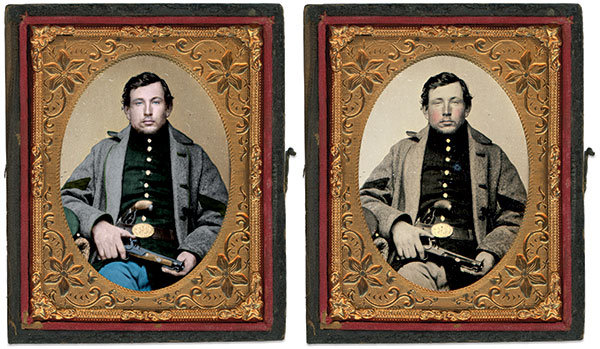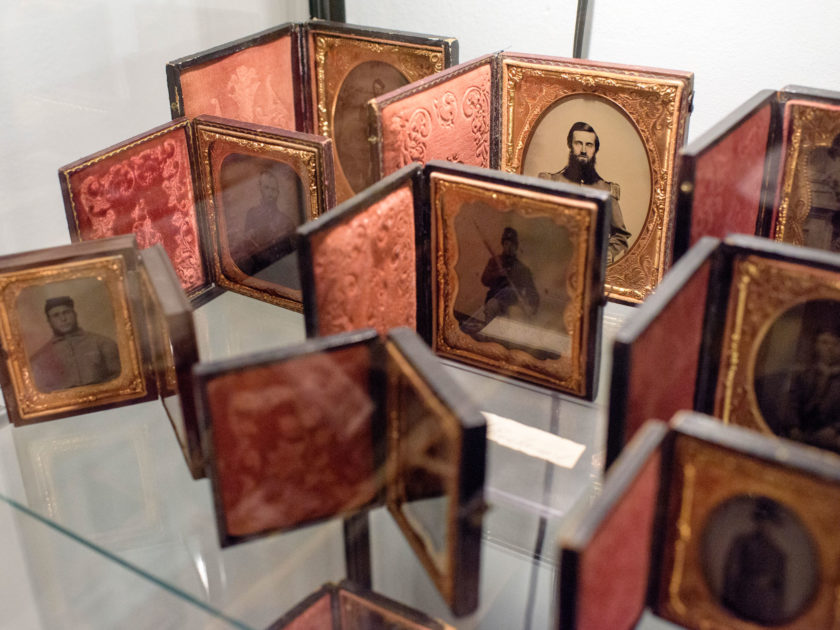I’m excited to announce two new departments in MI.
Behind the Backdrop is an exploration of the wonderful and varied imagery you see in portrait photographs. Adam Ochs Fleischer will investigate the artistry of these distinctive displays and the photographers who used them. Adam’s work is part of a larger goal to be the definitive source for backdrops. Whether primitively or expertly painted, these canvases provide critical clues that can assist in identifying unknown men and women, much in the same way as uniforms, accouterments and weapons. Adam’s inaugural column demystifies the tents and palm tree backdrop of J. Jones at Virginia’s Rendezvous of Distribution.
Material Culture examines uniforms, equipment, weapons and related objects, part of our continuing effort to make you a more informed photo sleuth. This department will be guest hosted, which allows MI to tap into the various communities of collectors focused on specific relic types. Each column will be organized as text blocks rather than a traditional narrative—more guide-like in its form. Our inaugural column is written by Frederick C. Gaede, who shares his knowledge about the use of leather neck stocks from 1851 to 1865.
Once you’ve read and absorbed the contents of these new departments, please contact me with your feedback. I’m eager to hear from you.

I also want to announce a policy modification. In the Summer 2015 issue, in my editorial “On Colorizing Photographs,” I wrote, “You will not find modern colorization techniques used in Military Images. MI draws a hard line on not manipulating images. MI believes the original tinting, bumps, bruises, scratches and dents are part of the history of the photograph and should be preserved.” I also stated that there is a place for colorized photos, but not in MI.
Beginning with this issue, colorized images will be allowed for educational purposes. Any colorized image must be accompanied by the original uncolored image. Why the change? Color fills in gaps in a way our imaginations cannot. You’ll see two examples in Brian T. White’s examination of the overcoat worn by U.S. Sharpshooters. Color reveals just how distinctly different their gray coats and green uniforms stand apart from the average Union soldier.
Ronald S. Coddington
Editor & Publisher
SPREAD THE WORD: We encourage you to share this story on social media and elsewhere to educate and raise awareness. If you wish to use any image on this page for another purpose, please request permission.
LEARN MORE about Military Images, America’s only magazine dedicated to showcasing, interpreting and preserving Civil War portrait photography.
VISIT OUR STORE to subscribe, renew a subscription, and more.

